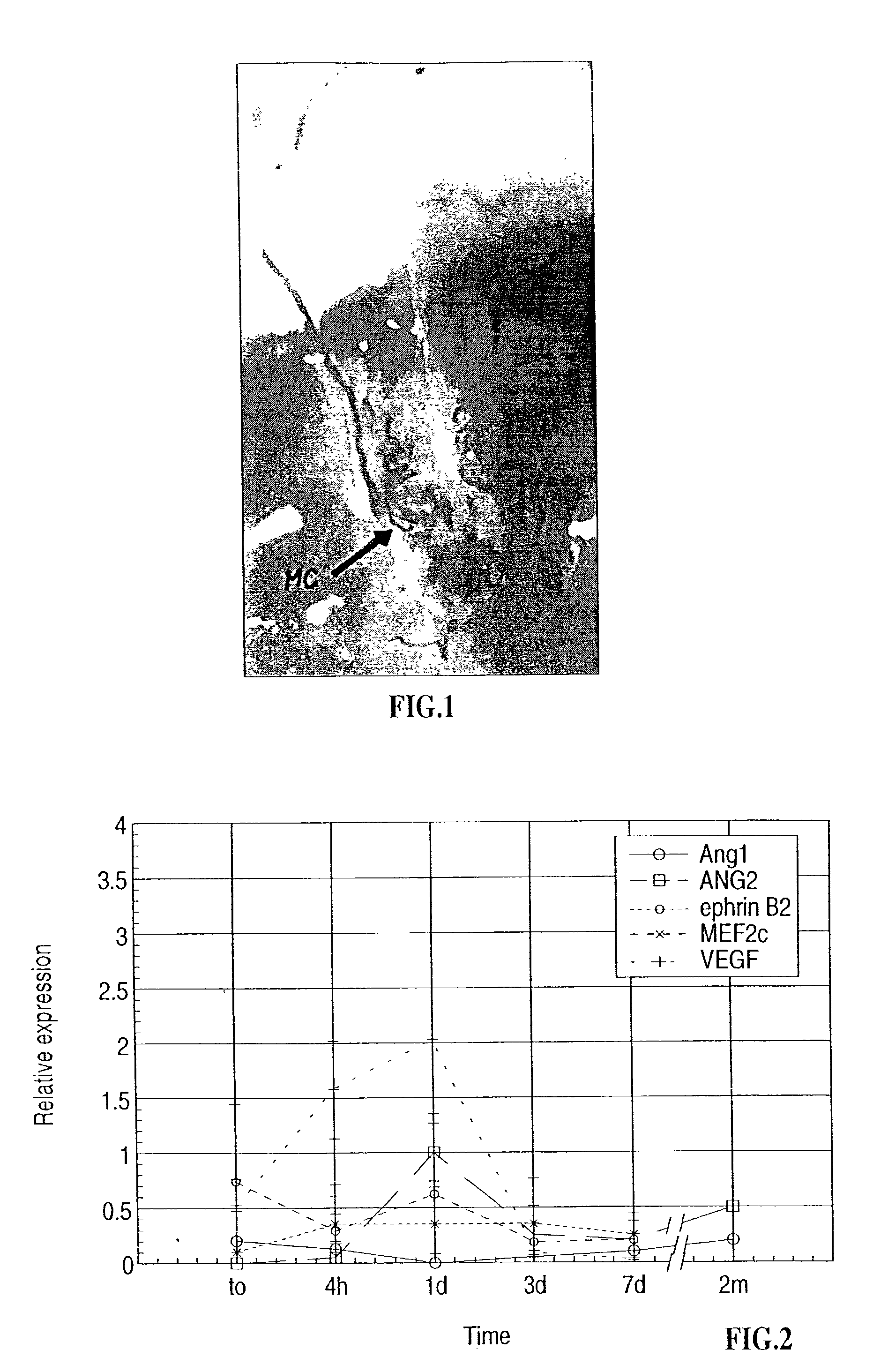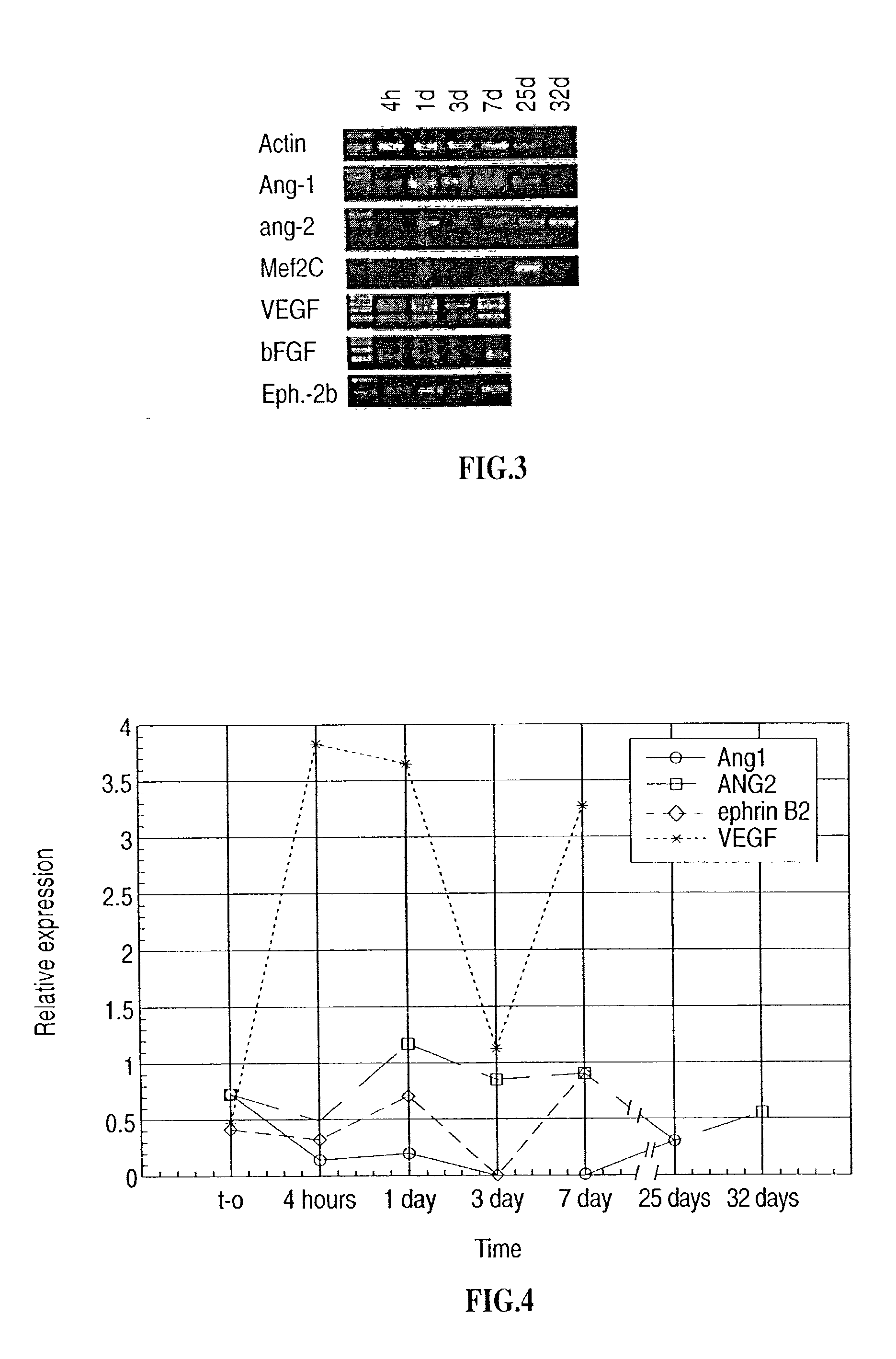Method and device for inducing biological processes by micro-organs
a technology of biological processes and microorganisms, applied in the field of biological processes induction by microorganisms, can solve the problems of inability to produce the conditions necessary for promoting in vivo angiogenesis, lack of clinical success, and occlusive arterial diseas
- Summary
- Abstract
- Description
- Claims
- Application Information
AI Technical Summary
Problems solved by technology
Method used
Image
Examples
example 1
Micro Organs
[0280] Materials and Experimental Methods
[0281] Approval for animal experiments was obtained from the Animal Care and Use Committee of the Faculty of Science of the Hebrew University.
[0282] Micro-Organ Preparation:
[0283] Adult animals (C57Bl / 6 mice or Sprague Dawley rats) were sacrificed by asphyxiation with CO.sub.2 and the lungs were removed under sterile conditions. The lungs were kept on ice and rinsed once with Ringer solution or DMEM including 4.5 gm / l D-glucose. micro-organs were prepared by chopping the lungs with a Sorvall tissue chopper into pieces approximately 300 .mu.m in width. micro-organs were rinsed twice with DMEM containing 500 units / ml Penicillin, 0.5 mg / ml Streptomycin and 2 mM L-Glutamine (Biological Industries) and kept on ice until use.
[0284] Micro-Organ Implantation:
[0285] Adult C57Bl / 6 mice were anesthetized using 0.6 mg Sodium Pentobarbitol per gram body weight. The mice were shaved, and an incision about 2 cm long was made in the skin at an ar...
example 2
Spleen Micro-Organs
[0320] Mouse Spleen micro-organs were prepared from as described hereinabove and implanted into syngeneic mice. FIG. 8 illustrates a micro-organ (arrow) which was implanted subcutaneously into the syngeneic mouse and examined at six months following implantation. As is clearly demonstrated in FIG. 8, the micro-organ induced angiogenesis. In fact, the pattern of blood vessels formed gives the impression that the micro-organ is micro-organ was an inherent organ of the host.
example 3
Cornea Implantation of Micro-Organs
[0321] The cornea is the only tissue of the body, which is devoid of blood vessels. As such, the cornea is an excellent model tissue for studying angiogenesis. Rat lung micro-organs were implanted in the corneas of syngeneic rats. As shown in FIG. 9, a most remarkable angiogenic pattern was also induced in the cornea. These remarkable results again verify that micro-organs are effective in inducing and promoting angiogenesis.
PUM
| Property | Measurement | Unit |
|---|---|---|
| time | aaaaa | aaaaa |
| diameter | aaaaa | aaaaa |
| pore size | aaaaa | aaaaa |
Abstract
Description
Claims
Application Information
 Login to View More
Login to View More - R&D
- Intellectual Property
- Life Sciences
- Materials
- Tech Scout
- Unparalleled Data Quality
- Higher Quality Content
- 60% Fewer Hallucinations
Browse by: Latest US Patents, China's latest patents, Technical Efficacy Thesaurus, Application Domain, Technology Topic, Popular Technical Reports.
© 2025 PatSnap. All rights reserved.Legal|Privacy policy|Modern Slavery Act Transparency Statement|Sitemap|About US| Contact US: help@patsnap.com



